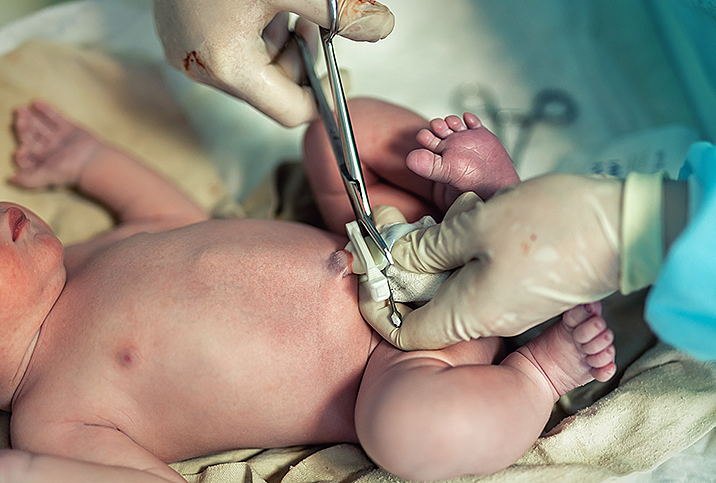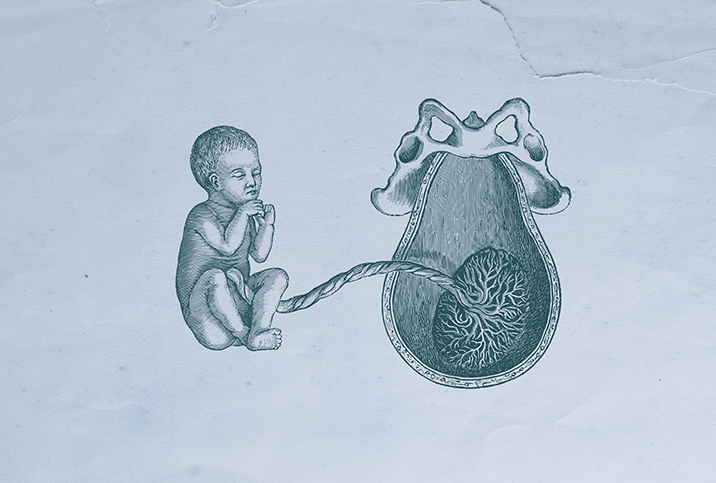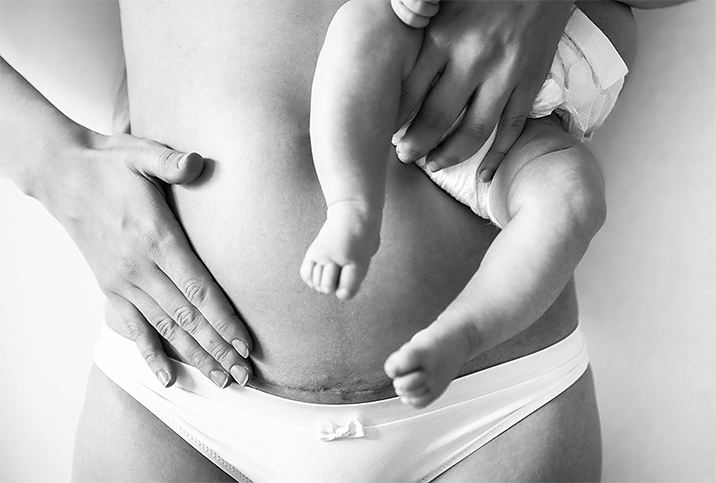What if a Long Umbilical Cord Wraps Around My Baby's Neck?

Nutrients and oxygen reach your unborn baby in the womb through the umbilical cord. But have you ever heard about a nuchal cord? It is a condition related to the umbilical cord and not a different cord.
A study on umbilical cords reviewed their length based on 1,000 deliveries. The umbilical cords' length varied from 24 to 124 centimeters (cm). Most were between 51 and 60 cm, and the average was 63.86 cm. A long umbilical cord can easily loop around the baby's torso, limbs or neck.
"A nuchal cord is when a baby's umbilical cord wraps around their neck more than once. They naturally may come undone and move around freely in most cases and do not cause a problem for the baby," said Monte Swarup, M.D., a board-certified OB-GYN in Chandler, Arizona, and founder of the community forum HPV Hub.
The umbilical cord is shorter than the fetus before the 20th week of pregnancy, therefore, it is unlikely that the cord could wrap around the baby's neck or head at that point. At 20 weeks, you're halfway through your pregnancy, and your baby is the size of a banana—around 25.6 centimeters long. Nuchal cords typically start occurring in the second half of the pregnancy when the long umbilical cord appears.
How common is a nuchal cord?
A nuchal cord is present in approximately 28 percent of births, of which 3.7 percent have two or more loops, according to researchers.
The occurrence of nuchal cords rarely causes any long-term issues for babies or mothers, said Zahra Ameen, M.B.B.S., a consultant OB-GYN at Cadogan Clinic, headquartered in London.
"It's more common as the pregnancy progresses, particularly if you go over your due date, with an incidence of 29 percent at 42 weeks," Ameen explained. "Sometimes nuchal cords can be seen on the scan, but most are diagnosed when the baby is born."
What causes the umbilical cord to wrap around the baby's neck?
A nuchal cord can happen due to the baby's movements, Swarup noted.
"Imagine a baby twisting and the cord wraps; if it tightens, the baby will just move into a better position and loosen it," he said. "Nuchal cords usually cause no harm to mothers or their babies. However, some general obstetric complications might be blamed on the nuchal cord, and this is hard to prove," Swarup added, using stillbirth as an example.
A 2017 medical review stated that nuchal cords can potentially cause perinatal distress as well as a further—but rarely significant—risk factor for long-term neurodevelopmental effects in the developing baby.
When a nuchal cord is visible on ultrasound, usually there is no need to worry.
"Detection of nuchal cord is quite common and if found on ultrasound predelivery is not concerning and will not influence the mode of delivery. It is perfectly safe to proceed with a vaginal delivery with the usual monitoring of the baby's heartbeat," Ameen reassured.
And not all long umbilical cords lead to nuchal cords. However, "if there are any concerns with the baby's heartbeat, then delivery may be expedited with instrumental delivery or cesarean section," she continued.
Loose vs. tight nuchal cord
When a loose nuchal cord is detected at birth, the obstetrician can loop it over the baby's head safely, according to Ameen. In other cases, such as a tight nuchal cord, the doctor clamps and cuts the cord to ease the delivery of the baby.
A tightly wrapped nuchal cord around the baby's neck can result in complications. However, Swarup added that symptoms include blood spots, abrasions on the neck and purple coloration of the facial skin, which tend to resolve on their own for the baby.
"With a tight nuchal cord in labor, in theory, the cord can tighten with labor obstructing blood flow through the cord and affecting flow to the baby, leading to a cesarean section or operative delivery," Swarup added.
A retrospective analysis of the nuchal cord looked at the frequency of this occurrence and its effect on the baby during and after birth. The study analyzed 350 deliveries, including 65 nuchal cord cases (18.57 percent), which were grouped into "loose" (48) and "tight" (17) cases. A loose nuchal cord can be easily uncoiled before delivery, while a tight cord needs to be clamped and cut before delivery.
Comparing the mode of delivery and fetal outcome, the study showed that the loose nuchal cord group had no significant difference from the non-nuchal cord group and did not increase the chances of needing a cesarean section. However, the tight nuchal cord group resulted in a significantly higher rate of fetal distress and a low Apgar score, a standardized scoring system for infants on their color, heart rate, reflexes, muscle tone and respiration after delivery.
While there is no way to treat or prevent the development of a long umbilical cord or a nuchal cord, in most cases, there are no adverse effects on the health of the baby or the mother.


















